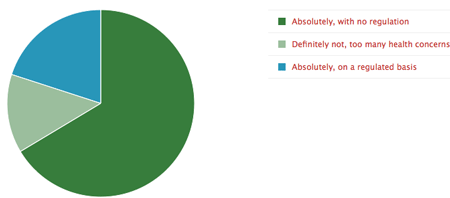South Dakota could continue to be the home of substandard gas if refiners have their way. If the American Coalition for Ethanol (ACE), a national ethanol organization based in Sioux Falls, South Dakota has its way, it will not become the dumping grounds for low-octane fuel. Historically the state has allowed 85 octane gasoline for sale in the western part of the state but it has been discovered to be “leaking” into other areas. Ironically after a review of state laws and rules by the SD Weights and Measures it was determined that the sale of this gas is illegal.
ACE Executive Vice President Brian Jennings asks that the state follow the letter of the law and resist making 85 octane gasoline available throughout the state.
 “We strongly oppose this recommendation to bend the rules so refiners can pad their profits by dumping substandard gasoline into South Dakota,” Jennings said. “Eighty-five octane gasoline is bottom of the barrel fuel that according to vehicle manufacturers will reduce fuel economy and performance, increase harmful tailpipe emissions, and could damage engines.”
“We strongly oppose this recommendation to bend the rules so refiners can pad their profits by dumping substandard gasoline into South Dakota,” Jennings said. “Eighty-five octane gasoline is bottom of the barrel fuel that according to vehicle manufacturers will reduce fuel economy and performance, increase harmful tailpipe emissions, and could damage engines.”
The organization has learned that the State would require a label to inform consumers that the 85 octane fuel may not meet engine manufacturer’s minimum standards for vehicle performance. Before any changes take effect, however, the state will open the discussion up for public input. ACE along with other ethanol and corn grower stakeholders plan to submit comments in opposition of the rule change.
“Even though ethanol’s blending octane is 113, the highest and cleanest source of octane on the market, when this low-grade gas is blended with 10 percent ethanol we are very concerned ethanol will be mistakenly blamed for engine performance problems,” continued Jennings. “That is an unacceptable consequence for South Dakota’s ethanol industry and thousands of the state’s residents and farmers who have invested in ethanol production.”






 President Obama made up a “to-do list” for Congress
President Obama made up a “to-do list” for Congress 
 The 2012 CUTC agenda features cutting-edge technologies and new uses that are positioned change the corn industry. Among the session topics is Advance Biofuels, which will highlight some of the most recent research on advanced biofuels. Speakers will cover thermochemical and biochemical and biomimetic routes to the pretreatment and hydrolysis of lignocellulosics (such as corn fiber hulls, corn stover, etc.) to produce sugar and phenolic monomers that can be further upgraded to synthetic fuels, bioethanol, and/or chemicals.
The 2012 CUTC agenda features cutting-edge technologies and new uses that are positioned change the corn industry. Among the session topics is Advance Biofuels, which will highlight some of the most recent research on advanced biofuels. Speakers will cover thermochemical and biochemical and biomimetic routes to the pretreatment and hydrolysis of lignocellulosics (such as corn fiber hulls, corn stover, etc.) to produce sugar and phenolic monomers that can be further upgraded to synthetic fuels, bioethanol, and/or chemicals.  “In spite of the wettest weather of the spring, producers in the Midwest still managed to plant a significant acreage of corn and soybeans” last week, says USDA Meteorologist Brad Rippey. “Corn emergence was greatly benefited by the rain and continuing warm weather.” Nearly a third of the crop is emerged nationwide, compared to the average of 13%. Last year, just six percent was emerged by this time.
“In spite of the wettest weather of the spring, producers in the Midwest still managed to plant a significant acreage of corn and soybeans” last week, says USDA Meteorologist Brad Rippey. “Corn emergence was greatly benefited by the rain and continuing warm weather.” Nearly a third of the crop is emerged nationwide, compared to the average of 13%. Last year, just six percent was emerged by this time.  While the industry is moving steadily toward the 15 billion gallon corn ethanol cap under the Renewable Fuel Standard (RFS2), Glauber says right now the market is steady at about 10 percent of ethanol blended fuel and getting E15 in the marketplace is moving slowly toward reality. “But you still have the underlying economics of whether or not a gas station is going to change over equipment to be able to sell E15,” he said. “The likely thing would be so-called blender pumps, which are expensive propositions.”
While the industry is moving steadily toward the 15 billion gallon corn ethanol cap under the Renewable Fuel Standard (RFS2), Glauber says right now the market is steady at about 10 percent of ethanol blended fuel and getting E15 in the marketplace is moving slowly toward reality. “But you still have the underlying economics of whether or not a gas station is going to change over equipment to be able to sell E15,” he said. “The likely thing would be so-called blender pumps, which are expensive propositions.”